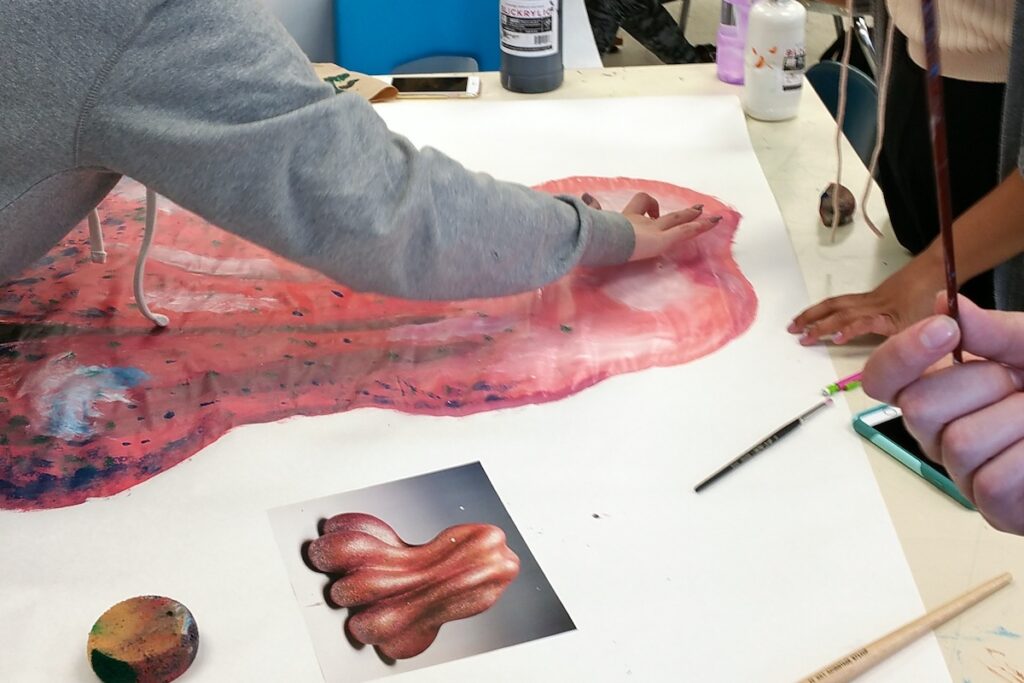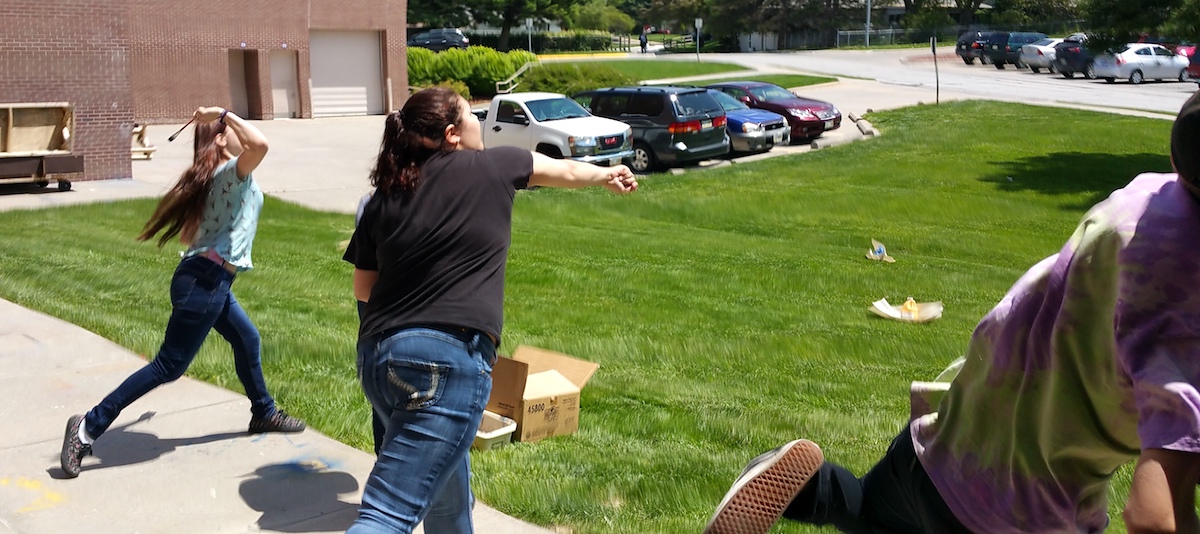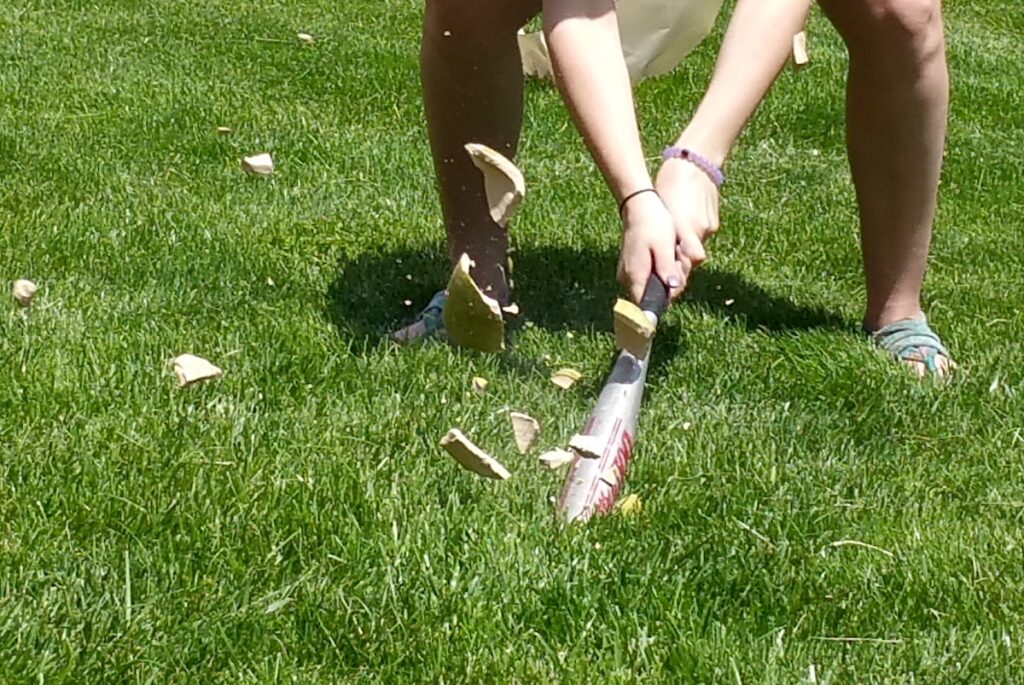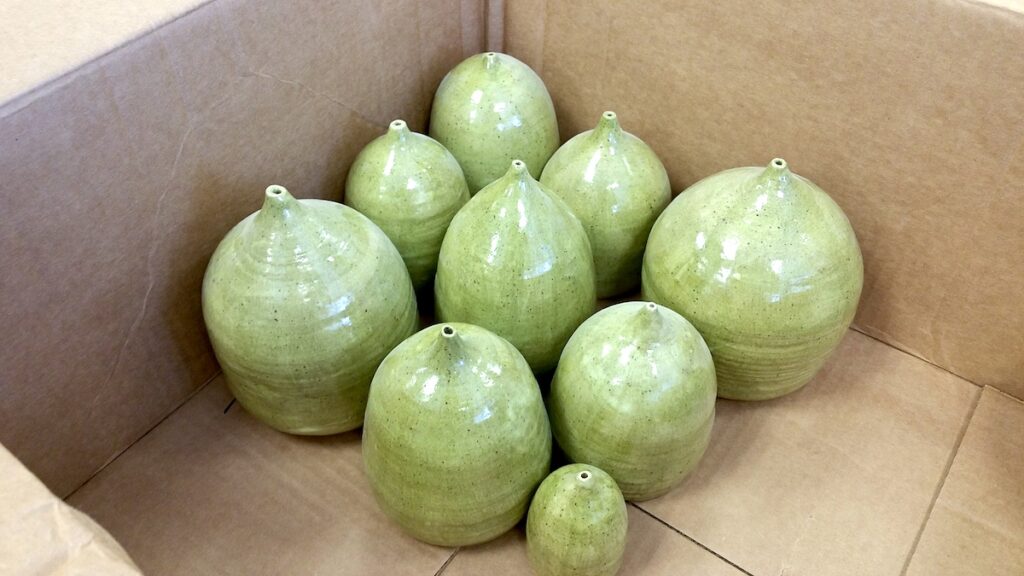As we move closer to summer, students and teachers undoubtedly need something to change up the routine. Maybe your class just turned in their AP Portfolios and they need a break for a couple days. Maybe you have some extra time during the last days of school. Or maybe, your 6th graders just need to get outside for a couple days before they drive you completely crazy.
No matter the problem, the perfect end-of-the-year solution is here–the Art Olympics.
The Art Olympics provide quality entertainment and just the right amount of education along the way. As students divide into teams and compete, it’s a great way for them to step out of the classroom and try new things.
Below you’ll find a list of events along with a rough schedule. Of course, you can tailor this to meet your needs depending on your student population and the time you have. The team with the most points at the end of the competition wins. A found-object trophy is a great way to enhance the competition if you feel so inclined.
Drawing and Painting Events (Day One)
Collaborative Drawing

Teams are given a 3’ x 5’ sheet of paper and a sealed envelope. Each envelope contains a copy of a random drawing, painting, or photograph from art history. Using their choice of drawing materials, all team members must work together to recreate the artwork found in the envelope to the best of their ability.
Time Limit: 20 minutes
Scoring: Teams may earn up to 10 points based on the scoring average from the team of judges. Judges score based on how well the team matches the original image.
Blind Drawing
One team member is given an image they must describe to a second team member who then draws that image. The first team member CANNOT look at the drawing being created, and the second team member CANNOT look at the image.
Time Limit: 5 minutes
Scoring: Teams may earn up to 10 points. Judges rank the drawings from most accurate to least accurate, taking quality into consideration, and award points accordingly. If either team member peeks during the five minutes, the team is disqualified and may not earn any points.
Color Mixing
The two artists work collaboratively in this event attempting to mix and match colors. Each team is given a card with five premixed colors, and a palette with equal amounts of red, yellow, blue, black, and white paint. More paint IS NOT to be given. Using only the colors on the palette, teams must mix paint to match each of the five colors as closely as possible.
Time Limit: 10 minutes
Scoring: Teams may earn up to 10 points. Judges award points based on the accuracy of hue, value, and intensity.
Athletic Events (Day Two)
Paint Brush Throw for Accuracy
Each participant chooses three brushes. Then, each participant throws the brushes one-by-one at a series of five targets placed throughout a field.
Scoring: The closest to the center of each target receives two points. The next closest to the center receives one point. Whichever team earns the most points earns 10 points toward their team score.

Paint Brush Throw for Distance
Each participant chooses three brushes. Then, each participant throws those brushes as far as they can.
Scoring: The furthest throw from each participant is counted, and points are awarded for the best of these throws. The top overall throw receives 10 points, 2nd place receives 9 points, etc., with 10th place being awarded 1 point.
Palette Toss
Each participant has three chances to throw a paint palette, Frisbee-style, as far as possible.
Scoring: The furthest throw from each participant is counted, and points are awarded for the best of these throws. The top overall throw receives 10 points, 2nd place receives 9 points, etc., with 10th place being awarded 1 point. If you break the palette, you are disqualified.
Smash and Dash

Imagine this as the most destructive relay race ever. Three participants each take a turn running toward an unwanted artwork (a never-finished canvas, that cardboard sculpture you never liked, an abandoned paper maché sculpture–get creative!) and hitting the artwork three times with a baseball bat. Then, they return to the start, and the next participant is on their way.
Scoring: The fastest overall time wins 10 points. Bonus points can be awarded for the complete and total destruction of the artwork if you so desire.
Ceramics Events (Day Three)
Wheel Throwing Challenge
Each participant receives three pounds of clay. Students may take as much time as needed to wedge their clay and prep supplies. As soon as the clay touches the wheel, students have 5 minutes to throw the tallest, widest vessel possible. If you really want to challenge your students you could have them throw blindfolded, throw as a team, or throw using only their feet.
Time Limit: 5 minutes (plus prep time)
Scoring: Each piece has the height and width measured to determine the size. The largest vessel wins and is awarded 10 points.
Ceramic Shuffleboard
Each participant is given a choice of unwanted or unclaimed ceramic pieces to slide across the art room floor, shuffleboard-style, toward paper targets.
Scoring: Participants earn points for their team if any part of their ceramics piece lands on a target. Large, close targets are worth 1 point, mid-range, mid-size targets are worth 5 points, and small, far targets are worth 10 points. The team that earns the most points earns 10 points toward their team score.
Ceramic Shot Put

You can create a few spherical vessels on the wheel for this event, or use any ceramics you have lying around your room. After learning about basic shot put technique, each participant has a chance to shot put a ceramics piece.
Scoring: The furthest shot put from each participant is counted, and points are awarded for the best of these throws. The top overall throw receives 10 points, 2nd place receives 9 points, etc., with 10th place being awarded 1 point.
The Art Olympics should be a fun experience for your kids. It’s a great way for them to create art, work together, and creatively strategize. And, it’s also a great way to destroy a couple of unwanted artworks. I mean, it’s the end of the year. You need to clean your room anyway, right? Pick and choose the events you think your students will like best. You might even add a few of your own! Either way, it’s a great way to have some fun outside and celebrate a great school year.
If you’re looking for some similar events for the elementary level, check out 5 Games to Put an Artistic Twist on Field Day.
What other events do you think kids would enjoy?
What types of end-of-the-year activities do you usually do with your classes?
Magazine articles and podcasts are opinions of professional education contributors and do not necessarily represent the position of the Art of Education University (AOEU) or its academic offerings. Contributors use terms in the way they are most often talked about in the scope of their educational experiences.





